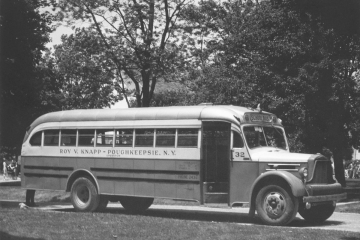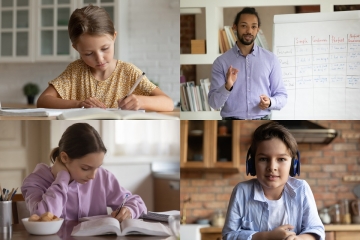I spent most of my twenties in northeast North Carolina teaching English in a windowless, leak-prone trailer behind an overcrowded high school. Once I got through my first year as a rookie—what fun that was!—subsequent memories are fond (smell of mildew aside).
Teaching can be a lonely endeavor—all the more so when you’re physically separated from veteran colleagues who might choose to shelter and nurture the newbies. Without such provision, you have to make it on your own.
One thing that helped me to fly was finding in my mail cubby a quarterly newsletter ripe with engaging instructional strategies put out by the National Council of Teachers of English (NCTE), of which I was a member. Useful pedagogical tips and resources galore these were, vetted by actual high school teachers focused on the content I was teaching—Romeo and Juliet, persuasive writing, research skills, punctuation and grammar, etcetera. You name it, they had resources for the overburdened and creatively challenged educator. Printed on glossy paper, folded in half, and secured with a sticker, the humble brochure was a godsend. At lunch, I’d tear the seal so I could devour the content (along with a chicken patty and fries) before leaving the lounge for my portable oasis. By the time planning period was over, nearly every page had been highlighted or dog-eared. It was a valuable substitute for the teaching mentor I sorely needed.
That’s why I was so disappointed—okay, shocked—when I saw NCTE’s latest Position Statement on Media Education in the English Language Arts. Rather than equip educators with high-quality classroom tools and strategies to confront the perilous state of literacy in America, the Council now prefers that they use “teaching and learning practices that help to identify and disrupt the inequalities of contemporary life, including structural racism, sexism, consumerism, and economic injustice.” Indeed, a fundamental purpose of media education in their eyes is to “explor[e] Representation and Power through Critical Reading, Listening, and Viewing.” In that way, teachers help students to become “empowered change agents” in an apparent quest to dismantle the above-referenced “isms”.
This is ludicrous, not to mention detrimental to students and teachers alike.
Barring exile to Patmos, everyone knows that millions of young Americans are struggling to read and that our high school kids have been stuck in achievement stasis for decades. In 2019, just 35 percent of fourth graders scored proficient in reading on the Nation’s Report Card; that figure was 34 percent for eighth graders and 31 percent for twelfth graders. What’s more, the latest scores show a decrease in reading proficiency among lower-performing students (those at the tenth and twenty-fifth percentiles) compared to 2015. Upon the report’s release in 2019, Peggy Carr, then associate commissioner of the National Center for Education Statistics, which administers NAEP, uttered a glum reality: “In fact, over the long term in reading, the lowest-performing students—those readers who struggle the most—have made no progress from the first NAEP administration almost thirty years ago.”
One might think that a recommitment to teaching students how to read and write at grade level and higher would be the proper response from the nation’s premier association of ELA educators. Quite the opposite. Rather, they seem to think that our time-honored mode of communication has gone the way of VCRs and MP3 players:
The ability to represent one’s ideas using images and multimedia is now a valued competency in a wide variety of professional careers in the knowledge economy. It behooves our profession, as stewards of the communication arts, to confront and challenge the tacit and implicit ways in which print media is valorized above the full range of literacy competencies students should master.
And then the drop-the-mic clincher:
The time has come to decenter book reading and essay writing as the pinnacles of English language arts education.
Wow.
Let’s back up a minute. No one is saying that multimedia skills aren’t important. Fordham’s reviews of state ELA standards, in fact, expect that students be able to analyze and evaluate information presented in multimedia formats, such as “how information presented in print is different from that which is presented through the use of multimedia, noting what is conveyed through the use of various visual and aural techniques, such as bias and propaganda.”
But these skills don’t substitute for a strong foundation in reading and writing. They flow from it.
It wouldn’t be so bad if NCTE were simply calling for renewed attention to media education to help students become wiser consumers and producers in our uber-politicized environment. Take the following statement, for example, which was on target:
Everyone in our society now needs the ability to assess the widely varying quality of the information, entertainment, and persuasion that surrounds them, to evaluate the veracity and validity of claims, and to debunk misinformation when necessary.
But it doesn’t stop there. English educators are “to actively understand, teach about, and compensate for media landscapes that are specifically designed to amplify narratives where some voices and points of view are emphasized and others are trivialized, demeaned, or ignored.” The purpose of evaluating the validity of claims, then, is less about learning how to develop or refute an argument with legitimate evidence than it is about “students begin[ning] to deepen sociopolitical consciousness as they recognize how power relationships structure the narratives that surround us.”
In other words, kids are now supposed to study media to sniff out and combat the underlying and oppressive power structures. In fact, that’s a recurring theme in the position statement. Elsewhere, we’re told that students of critical media literacy need to “analyz[e] relationships between media and audiences, information, and power, often with attention to media institutions and representations that address systemic inequalities and social justice.” Sounds more like advice from Paulo Freire or Kimberlé Crenshaw than from the leading organization of K–12 English teachers.
If that weren’t enough, they make a feeble attempt to prove that “research evidence amply shows the need to move beyond the exclusive focus on traditional reading and writing competencies.” Where’s this evidence, you say? Well, they cite two studies—one of which is published in a journal about the “cultural politics of education” and takes place in England and Northern Ireland. It finds that “when students are empowered to critically examine popular culture texts in the classroom, the process can productively disrupt classroom hierarchies.” That hardly qualifies as a bounty of research justifying the “decentering” of traditional reading and writing.
After so many years, I still recall the assignments that grabbed the hearts and imaginations of my students. Debating vociferously in teams whether or not Daisy Buchanan ever truly loved Jay Gatsby. Writing and reading aloud their own poems that mimicked the arrangement and cadence of America’s greatest poets. Questioning long after the dismissal bell Steinbeck’s decision to have George pull the trigger. Composing a structured letter to a celebrity they’d researched for weeks explaining in detail why they admired them (and their joy in getting a response!).
These assignments engaged students with rich content in multiple genres—poetry, fiction, autobiographies, letters—to develop aptitude and appetite for literacy rooted in print media and traditional writing modes. They weren’t about “disrupting the inequalities of contemporary life.” Yes, that’s one key aim of a high-quality education—to offer upward mobility for disadvantaged students. But that purpose should not decenter the bread and butter of ELA classes. It should be a welcome outcome.
NCTE, you were once my lifeboat. Now you’re sinking fast.






